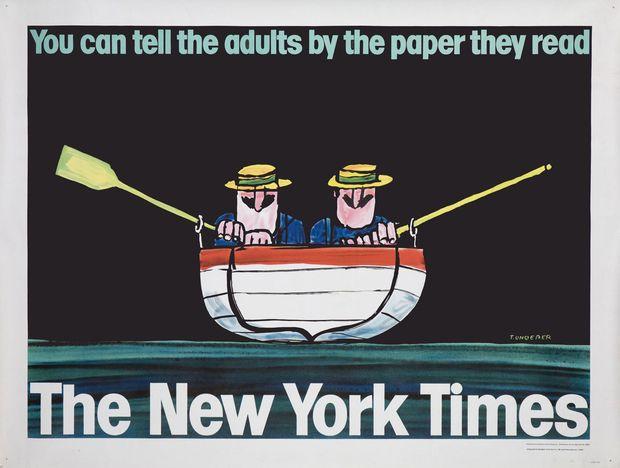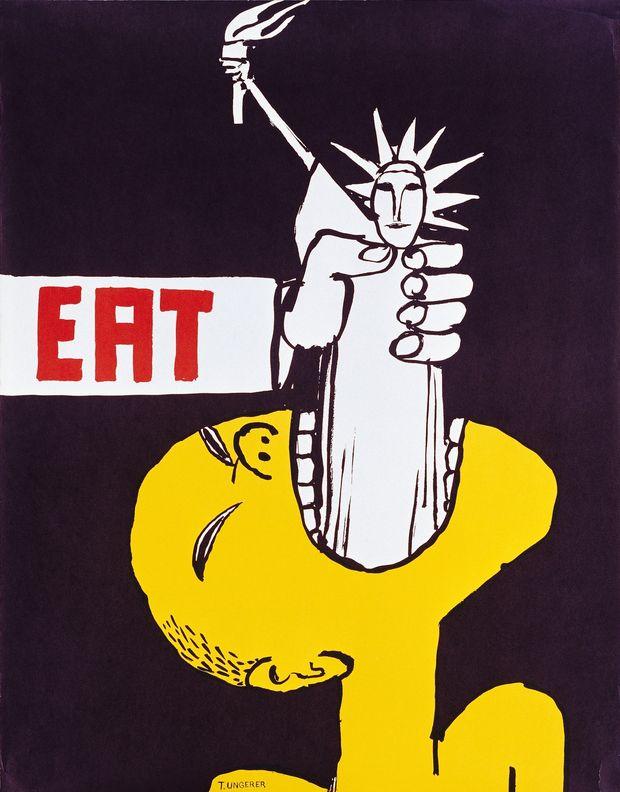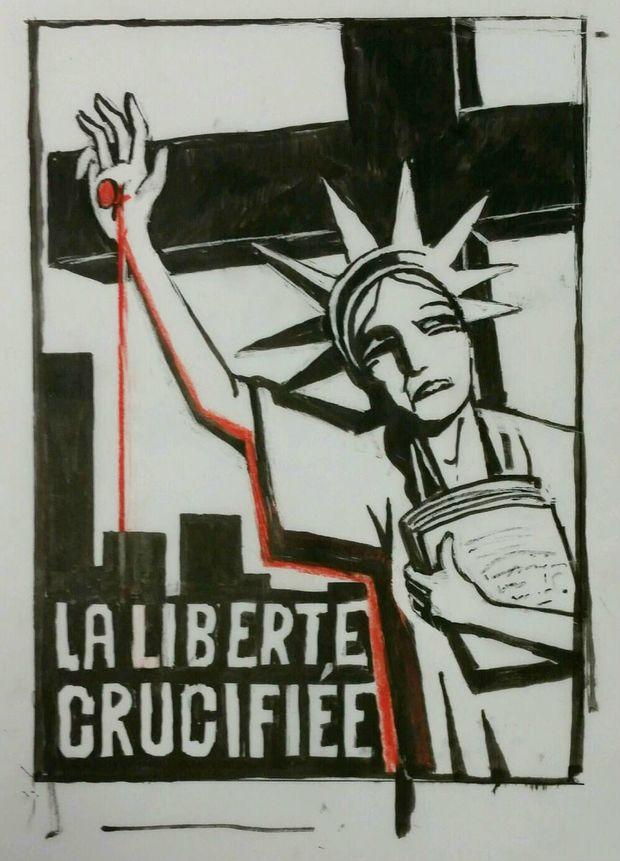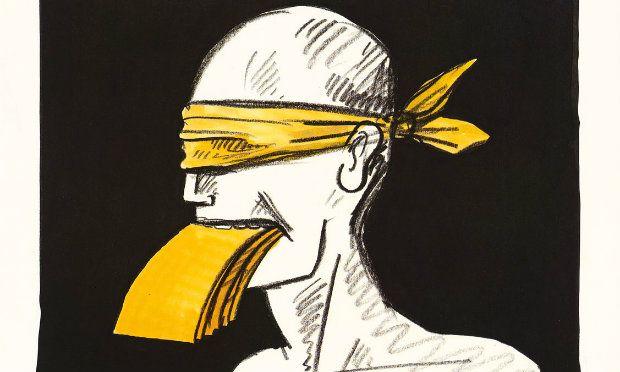"No Freedom without Freedom of the Press," by Tomi Ungerer, 1992
Children of the 60s, 70s, and 80s know Tomi Ungerer as an illustrator of kids' books like "Flat Stanley," "The Mellops" series, and "Crictor." But Ungerer is more than an illustrator — and much of his work is not kid-friendly.
Starting in the 1960s, Ungerer created political posters and satirical cartoons that viciously attacked the violent, grotesque and depraved parts of modern life. After the massacre at the Paris offices of the satirical newspaper Charlie Hebdo, Ungerer's work seems especially timely.
And now, the 83-year-old Ungerer has his first US museum retrospective: "Tomi Ungerer: All in One," showing at the Drawing Center in New York,
As a child in Strasbourg, France, Ungerer discovered the work of cartoonist Saul Steinberg and 19th-century artist Honoré Daumier, who both became important influences. When the Nazis annexed Strasbourg, nine-year-old Ungerer drew cartoons mocking Hitler — drawings which might have put himself and his family in danger had they been found.

Ungerer later moved to New York as a young man and worked in advertising. His ads for the New York Times are delightfully playful, nothing like the Gray Lady's current bland respectability.
But he also produced scathing cartoons that lampooned the greed, hypocrisy and soullessness of New York's high society. "He's willing to take it to the edge, where it becomes somewhat disturbing and we are somewhat uncomfortable," Gilman says of Ungerer's satirical drawings. "It's about revealing the underside of things."
In 1967, Columbia University commissioned Ungerer to make a series of posters protesting the war in Vietnam. But the posters he came up with were too raw for Columbia’s taste, according to Gilman. “They were deemed too outrageous, too difficult, too harsh to be used,” she says.

Unlike his send-ups of the rich and powerful, Ungerer's political cartoons weren't supposed to be funny, Gilman argues. She thinks Ungerer intended the Vietnam posters to be shocking. "What's so amazing is he presents things that other people might find offensive to even depict," Gilman says. "There's kind of an amazing bravery there."

Ungerer shares that taboo-breaking spirit with the cartoonists of Charlie Hebdo, whose satire frequently crossed lines of taste. In response to the massacre, Ungerer made a drawing in solidarity with the cartoonists of Charlie Hebdo. In it, the Statue of Liberty has been nailed to a cross. “Liberty crucified,” the caption reads, in French.
The message is ambiguous: It could apply equally well to government censorship as a terror attack on free speech. “Though the drawing was spurred by recent events, it could have been executed years ago, and refers to a recurring problem,” says the wall text next to the cartoon.
Ungerer has “this great sense of humanity, a great feeling of responsibility for the world,” Gilman says. “He’s deeply against violence, racism, and injustice of all kinds.”
This blog post comes from Sideshow, a podcast from PRI's SoundWorks network that looks at the intersection of culture and technology.
Our coverage reaches millions each week, but only a small fraction of listeners contribute to sustain our program. We still need 224 more people to donate $100 or $10/monthly to unlock our $67,000 match. Will you help us get there today?
